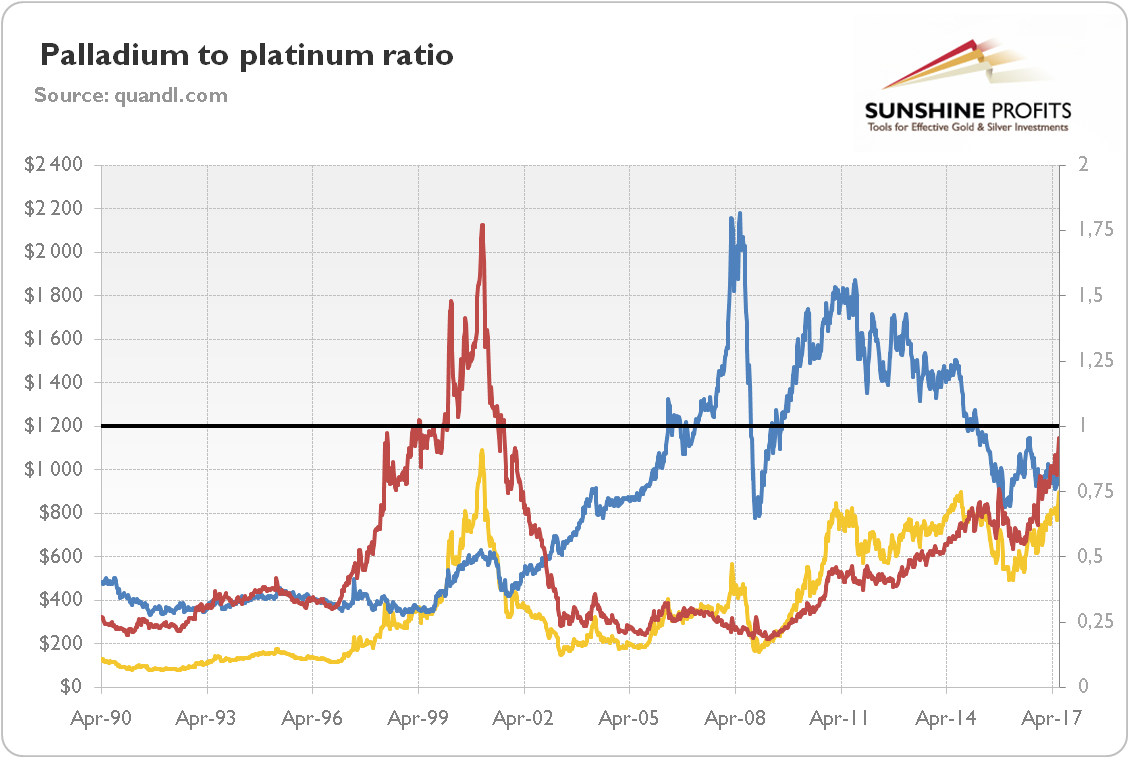Palladium is another element with great importance to the modern economy, but it’s often overshadowed by the other more famous and expensive precious metals. As the chart below shows, palladium has been generally cheaper than platinum – its more expensive substitute in industrial use and jewelry.
Chart 1: The palladium to platinum ratio (red line, right axis), the price of palladium (yellow line, left axis, P.M. London Fix, weekly average), and the price of platinum (blue line, left axis, P.M. London Fix, weekly average).

However, the palladium to platinum ratio has been approaching parity. Does that mean it is the appropriate moment to invest in palladium? Let’s deal with that question, examining the supplyand demand dynamics of this chemical element with the symbol Pd and an atomic number of 46.
Supply
The annual mining production in 2016 amounted to only about 6.7 million ounces. It came mainly from Russia (41 percent) and South Africa (38.1 percent). Meanwhile, recycling added about 2.5 million of ounces. It means that the total supply was 9.2 million ounces.
The above-ground stocks of palladium vary from 7 million to 26 million ounces, which corresponds to from 1 up to 4 years of mining production. The existence of large stocks of palladium may explain why market deficits did not translate into higher prices.
The total supply of palladium is projected by Johnson Matthey to rise 1 percent in 2017, as an 8.6 percent rise in recycling (due to a continued recovery in the number of vehicles being scrapped in North America) is likely to more than offset a 1.9 percent decline in primary supplies (due to lower sales from Norilsk Nickel’s inventory). Hence, the supply side of the palladium market would not be supportive for the price of the metal.
Demand
In 2016, total demand for palladium amounted to 9.4 million ounces. It was made up of three core segments: automotive (84.3 percent), industrial (20.6 percent), and jewelry (2 percent). As one can see, the shares do not add up to unity, as investment’s contribution was negative (investors liquidated 0.65 million ounces from their ETF holdings). Similarly to platinum, palladium is primarily an industrial metal with the dominant part of demand coming from automotive catalyst use.













Leave A Comment